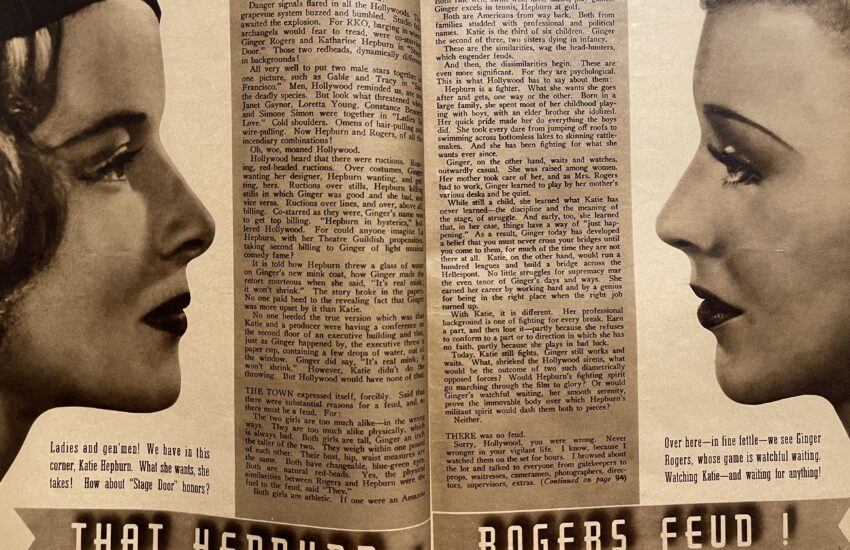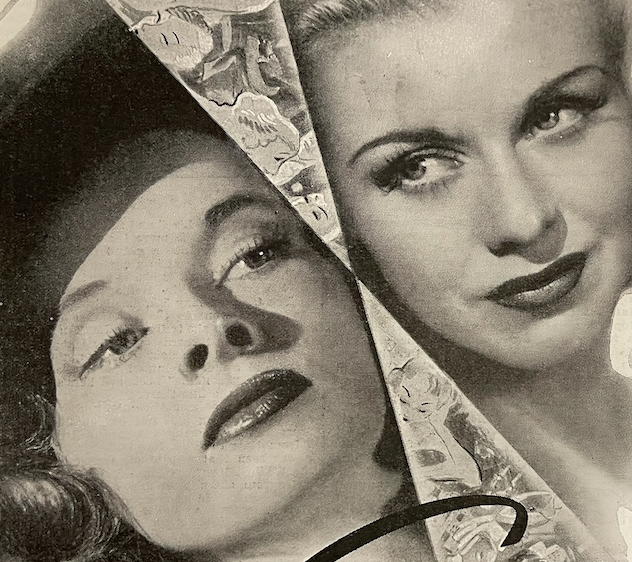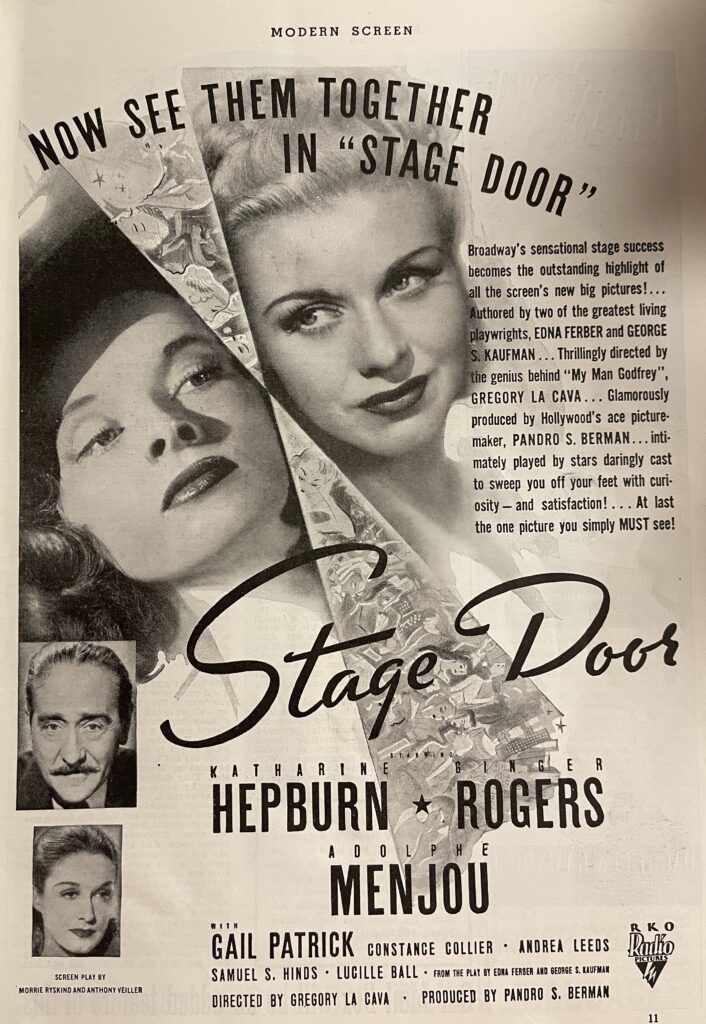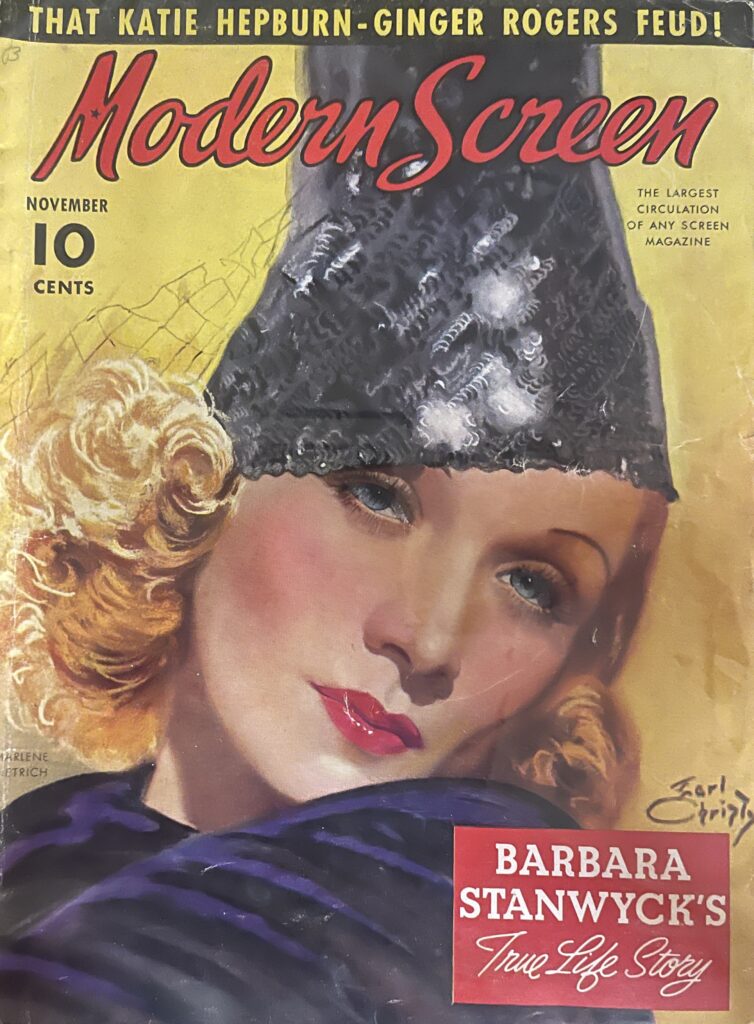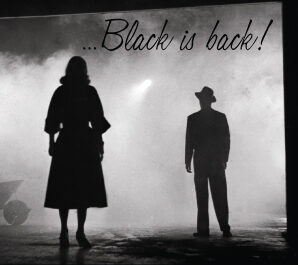In the November 1937 issue of MODERN SCREEN MAGAZINE, is an article about the onscreen feud between Katherine Hepburn and Ginger Rogers. It’s reported by writer Faith Service.
Faith Service, who had for more than a decade been writing about silent film and adapting photo-plays into magazine short-stories, printed a previous article “Garbo Never Sleeps- This is Her Tragedy- The Real Explanation of her strange life and her Broken Romance.” Interesting to read, it contains what seems to initially be a plausible theory that begins to explain the mystery of Greta Garbo with, “The reason why she does what she does, the reason why she doesn’t do the things other people do, the reason for her famous eccentricities and hermit-like existence, her lack of response to a social life, her lack of response to eager lovers is this- Garbo is an insomniac. She never sleeps.”
About Hepburn and Rogers, she begins, “Ladies and gen’men! We have in this corner, Katie Hepburn. What she wants, she takes! How about “Stage Door” honors? Over here–in fine fettle–we see Ginger Rogers, whose game is watchful waiting. Watching Katie–and waiting for anything!
FIREWORKS! Frenzies! A Feud? Danger signals flared in all the Hollywoods. The grapevine system buzzed and bumbled. Studio folks awaited the explosion. For RKO, barging in where archangels would fear to tread, were co-starring Ginger Rogers and Katherine Hepburn in “Stage Door”. Those two redheads, dynamically different in backgrounds!
All very well to put two male stars together in one picture, such as Gable and Tracy in “San Francisco”. Men, Hollywood reminded us, are not the deadly species. But look what threatened when Janet Gaynor, Loretta Young, Constance Bennett and Simone Simon were together in “Ladies in Love”. Cold shoulders, Omens of hair-pulling and wire-pulling, Now Hepburn and Rogers, of all the incendiary combinations! Oh, woe, moaned Hollywood.
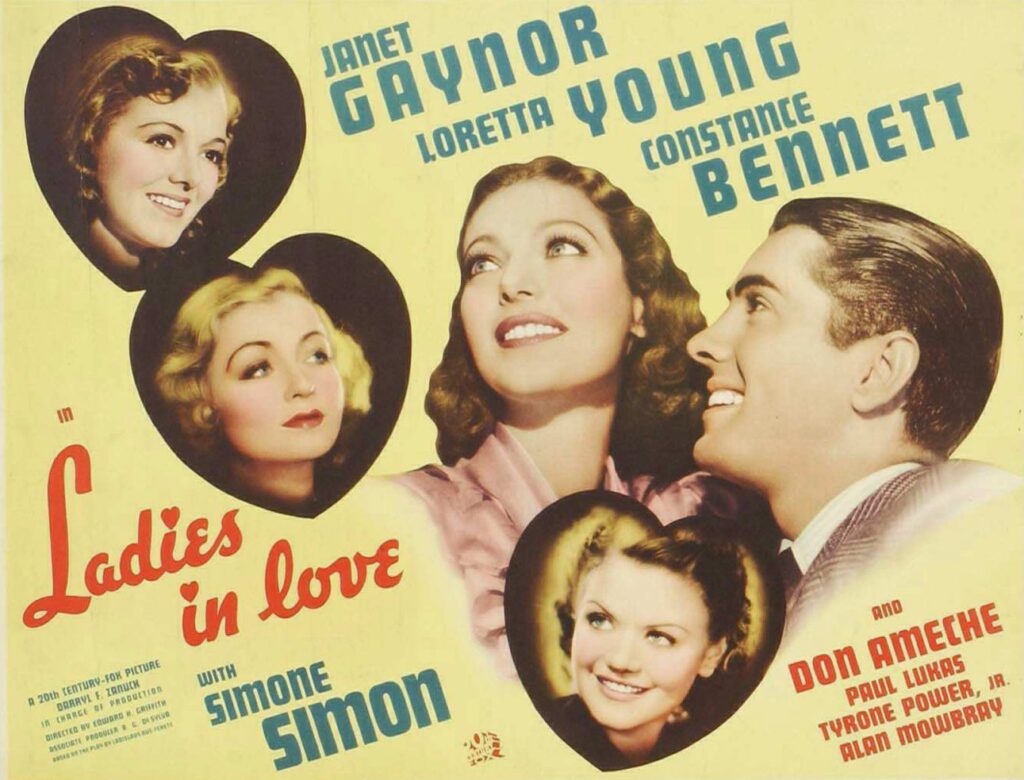
Hollywood heard that there were ructions. Roaring, red-headed ructions. Over costumes, Ginger wanting her designer, Hepburn wanting, and getting, hers. Ructions over stills, Hepburn killing stills in which Ginger was good and she bad, and vice versa. Ructions over lines, and over, above all, to get top billing. “Hepburn in hysterics,” hollered Hollywood. For could anyone imagine La Hepburn, with her Theatre Guildish propensities, taking second billing to Ginger of light musical comedy fame?
It is told how Hepburn threw a glass of wine on Ginger’s new mink coat, how Ginger made the retort courteous when she said, “It’s real mink; it won’t shrink.” The story broke in the papers. No one paid heed to the revealing fact that Ginger was more upset by it than Katie.
No one heeded the true version which was that Katie and the producer were having a conference on the second floor of an executive building and that just as Ginger happened by, the executive threw a paper cup, containing a few drops of water, out of the window. Ginger did say, “It’s real mink; it won’t shrink.” However, Katie didn’t do the throwing. But Hollywood would have none of that.
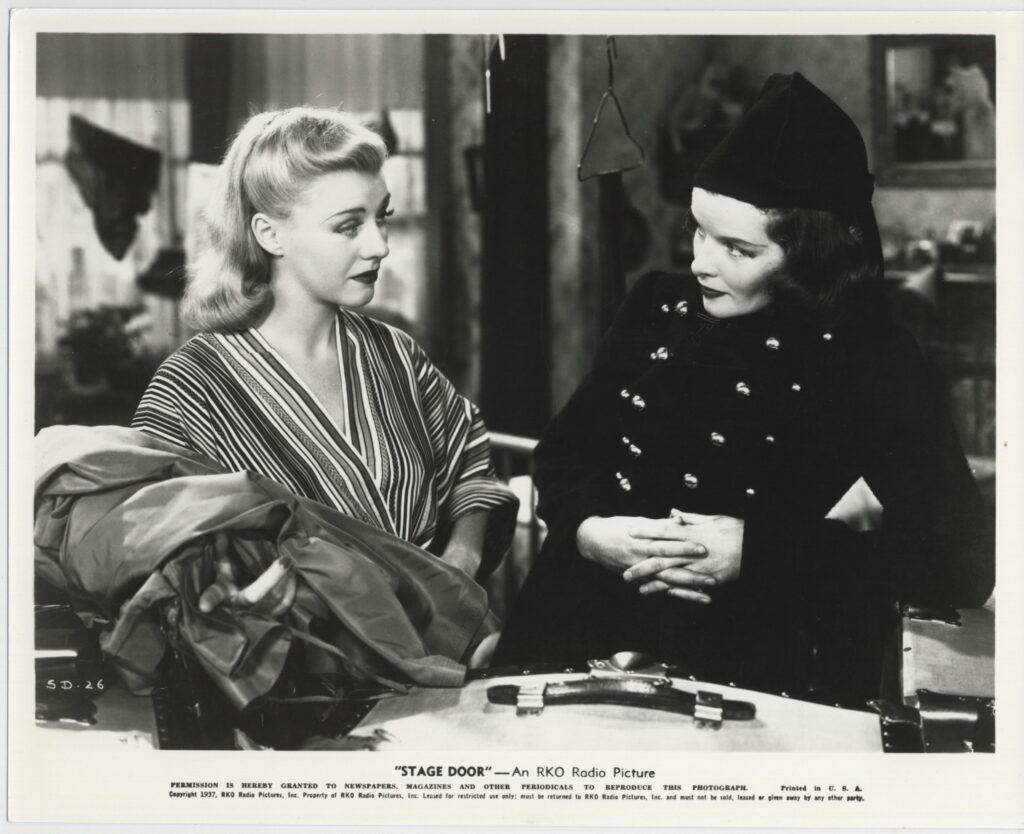
THE TOWN expressed itself, forcibly. Said that there were substantial reasons for a feud, and so there must be a feud. For: The two girls are too much alike– in the wrong ways. They are too much alike physically, which is always bad. Bothe girls are tall, Ginger as inch taller of the two. They weigh within one pound of each other. Their bust, hip, waist measures are the same. Both have changeable, blue-green eyes. Both are natural red-heads. Yes, the physical similarities between Rogers and Hepburn were the fuel to the feud, said, “They.”
Both girls are athletic. If one were an Amazon and one a languid lily, all might be well. But no. Both ride well, swim well, dive, dance, play games. Ginger excels in tennis, Hepburn at golf. Both are Americans from way back. Both from families studded with professional and political names. Katie is the third of six children, Ginger the second of three, two sisters dying in infancy. These are the similarities, wag the head-hunters, which engender feuds.
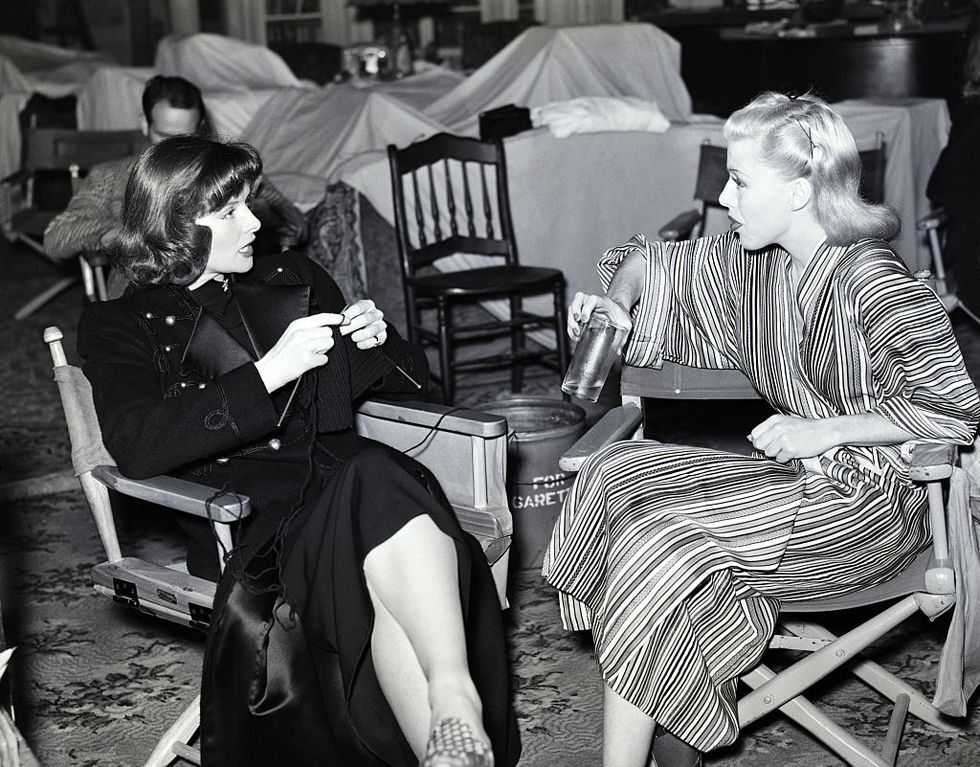
And then the dissimilarities begin. These are even more significant. For they are psychological. This is what Hollywood has to say about them: Hepburn is a fighter. What she wants she goes after and gets, one way or the other. Born in a large family, she spent most of her childhood playing with boys, with an elder brother she idolized. Her quick pride made her do everything the boys did. She took every dare from jumping off roofs to swimming across bottomless lakes to skinning rattlesnakes. And she has been fighting for what she wants ever since.
Ginger, on the other hand, waits and watches, outwardly casual. She was raised among women. Her mother took care of her, and Mrs. Rogers had to work, Ginger learned to play by her mother’s various desks and be quiet. While still a child, she learned what Katie has never learned– the discipline and the meaning of the stage, of struggle. And early, too, she learned that, in her case, things have a way of “just happening.” As a result, Ginger today has developed a belief that you must never cross your bridges until you come to them, for much of the time they are not there at all. Katie, on the other hand, would run a hundred leagues and build a bridge across the Hellespont. No little struggles for supremacy mar the even tenor of Ginger’s days and ways. She earned her career by working hard and by a genius for being in the right place when the right job turned up.
With Katie, it is different. her professional background is one of fighting for every break. Earn a part, and then lose it– partly because she refuses to conform to a part or to direction in which she has no faith, partly because she plays in bad luck. Today, Katie still fights. Ginger still works and waits. What, shrieked the Hollywood sirens, what would be the outcome of two such diametrically opposed forces? Would Hepburn’s fighting spirit go marching through the film to glory? Or would Ginger’s watchful waiting, her smooth serenity, prove the immovable body over which Hepburn’s militant spirit would dash them both to pieces?
Neither. There was no feud.

Sorry, Hollywood, you were wrong. Never wronger in your vigilant life. I know, because I watched them on the set for hours. I browsed about the lot and talked to everyone from gatekeepers to props, waitresses, cameramen, photographers, directors, supervisors, extras.
No feud, and here’s why: The two girls are friends. More, they have been friends ever since they came unto the lot, both gangling practically unknown and certainly unsung, freckle-faced (yes, both of them) and red-headed.
Ginger had made a few pictures for other companies. Late in 1932, RKO needed a young dancer to play opposite Fred Astaire in “Flying Down to Rio”. They chose Ginger. Thus her career was born. A few months before that, in July, Hepburn came on from New York to a studio which, to put it bluntly, was definitely not sold on her. She made “Bill of Divorcement.” Thus her career was born. Together, the two youngsters began on the same lot. And with careers such leagues apart, their friendship was conceived and grew.
They became stars. They have dressing room suites on the same corridor and have had from the start. Make pictures at the same time. Report together to the makeup man and chatter amiably over cups of coffee and pots of greasepaint liberally provided by the master maker-upper, Mel Burns. Ginger says, “Go ahead, Katie, your turn first,” and Katie says, “No, you go first, it’s ok by me.”
Now about the matter of the still pictures. As you may know, all major stars have a right to “kill” any stills of themselves which they do not like. The publicity department wondered when it realized that Hepburn and Rogers were united in a picture, whether one would kill stills another okayed and vice versa. The department told me they were pleasantly surprised. There was a lower mortality among stills than was customary. And one day an interesting thing happened. Katie was not working. She dropped on the set for a visit. A group of proofs handed to Ginger, who was so busy that she went over them hurriedly, passed them without really examining them. Hepburn noticed the casual okay. She went over them in her turn. One was swell of Katie, not at all swell of Ginger. Quietly Katie took it over to Ginger. “It’s okay by me, ” she said, “but do you think you want it?” The still was killed.
They would come to grief over the matter of wardrobe, said Hollywood. Muriel King, dressed Katherine Hepburn for “Sylvia Scarlett”. The two girls are close friends. Katie wanted her to dress her for “Stage Door”. Now, Muriel also dressed Ginger, but she has done more for Katie, and there is a little matter of their personal friendship. The studio wished both girls to be dressed by the same person. What would happen?
Nothing happened. Hepburn played a wealthy girl, stage struck, trying to make a name for herself on Broadway. Ginger played a young dancer, trying to get a musical-comedy job. Both girls agreed that there could be no conflict between their wardrobes, and both agreed that, of course, Muriel King, must dress them. So all was calm.
Neither girl, I am told, was ever temperamental on the set. No, not even Hepburn. She may be difficult with interviewers and photographers, shy and evasive with Mr. and Mrs. John Public. But on the set she was the equal of Ginger in cooperativeness and good humor. No, there were no fireworks. No feud. There is only friendship.

